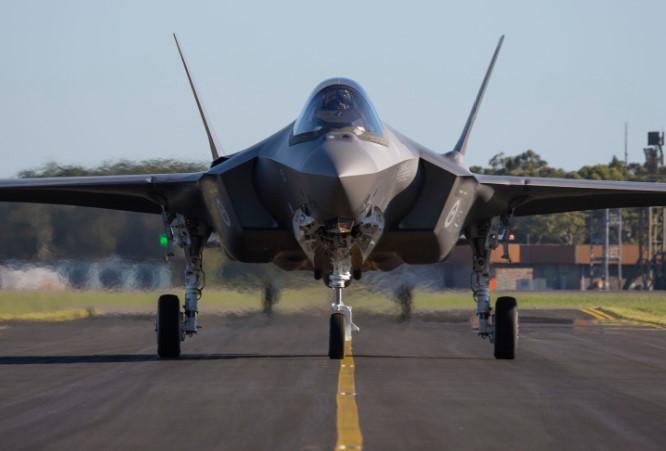More of the same isn’t the answer to Australia’s security challenges
Posted By Peter Hunter on August 7, 2019 @ 06:00

Last week here on The Strategist, Andrew Davies argued [1] that the idea of ‘balance’ in the ADF’s force structure is lazy thinking. He’s not the only one concerned by outmoded constructs like this, as we’ve seen from Peter Jennings [2] and Michael Shoebridge [3]. And at the recent Defence + Industry conference [4] in Canberra, where the defence secretary and senior ADF leaders emphasised the importance of Australia’s Pacific step-up strategy, questions arose about what our military forces can offer to government in an era of constant contest.
The answers won’t come from more-of-the-same prescriptions for fixing our security challenges by acquiring more of this aircraft or fewer of that ship, as the proponents of platform-centric thinking argue. These linear arguments miss the point. Legacy models that focus on destroying targets and moving arrows on maps are being overtaken by approaches that integrate the elements of national power to produce effects that compel desired political outcomes.
My new ASPI report, Projecting national power [5], takes aim at these questions. What are our defence forces for, in a contemporary environment where rival powers are using political warfare to win strategic objectives below the threshold of military intervention?
Like many others in the Indo-Pacific region, Australia is increasingly concerned that some revisionist powers are seeking to rewrite the regional order to their own advantage through political warfare and grey-zone methods. And since Australia’s first-rate military capabilities don’t seem to be deterring this sort of warfare, questions arise about what might be done to make our exquisite military platforms relevant to those challenges.
Of course, nobody is suggesting that we should scale back our defence forces, unless we want to resemble other mendicant security states. But while there may be no question of that immutable need for strong, capable defences, there’s still merit in a more penetrating analysis of what our investment should be buying us. This is where lazy thinking won’t do. Why would spending more money on more platforms be any more effective in countering political warfare and grey-zone action than our current models?
So what’s to be done? My suggestion is that we should look for better ways to use what we have, instead of asking for more. We should be figuring out how to combine the elements of national power, including defence, in smarter ways to enhance Australia’s regional influence. And while my report considers these questions from an air power perspective, the approach should be equally valid across other defence capabilities, and indeed across the whole of government.
In a region characterised by increasing competition, it only makes sense for Australia to do what it can to protect and enhance its own interests. We could say that this is simply old-fashioned realist power politics. But if we are to ensure our defence forces provide a valuable service to government in an environment characterised by winning without fighting, it will be important to encourage disruptive thinking about how our military assets might contribute to the desired strategic effect, whether that be influence, access or counter-coercion.
The government’s Pacific step-up quite rightly seeks to enhance Australia’s influence in the Indo-Pacific region. But without a robust approach to integrating the elements of our national power to achieve that influence, then neither more planes nor more ships or more tanks would seem to offer any better prospect for deterring grey-zone operations than they already do.
This might require some disruptive thinking about how we use our defence resources. In addition to their war-fighter roles, how might we use our exquisite assets as tools of influence? Is it possible that complex systems built to collect and exploit electronic information might have a role in operations geared to achieving influence? Of course, this should be on the positive side of the ledger too, since it’s not just about discouraging political warfare. Australia will need to contribute to cooperative relationships in the region if we wish to sustain the access and presence required to enhance our influence.
And where once enablers like international engagement and electronic warfare (among others) might not have been given the same attention as the acquisition of complex systems, these themes will need to be given prominence if we are to adopt an influence operations mindset. So while there’s little doubt by now that cyber and information operations have become more vital to the wielding of international influence, there remain unexplored questions on how our military assets and people can be similarly influential.
My new report doesn’t pretend to solve these problems. But it does seek to bring the questions to the fore, so that air power, and our defence forces more broadly, can look towards delivering the best value to government.
Article printed from The Strategist: https://aspistrategist.ru
URL to article: /more-of-the-same-isnt-the-answer-to-australias-security-challenges/
URLs in this post:
[1] Andrew Davies argued: /requiring-balance-in-the-adfs-force-structure-is-lazy-thinking/
[2] Peter Jennings: /how-not-to-defend-australia/
[3] Michael Shoebridge: /hugh-whites-plan-for-defending-australia-simply-isnt-viable/
[4] Defence + Industry conference: https://33creative.eventsair.com/QuickEventWebsitePortal/defence-and-industry-conference-2019/di
[5] Projecting national power: https://www.aspistrategist.ru/report/projecting-national-power-reconceiving-australian-air-power-strategy-age-high-contest
Click here to print.